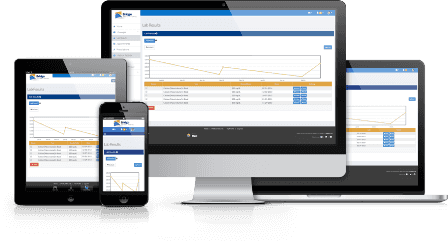How to Automate Administrative Tasks to Optimize Your Healthcare Organization
- Blake Rodocker
- June 21, 2014

Introducing new technologies to streamline time-consuming processes can help your healthcare organization boost its bottom line by making more efficient use of your employees’ time. These simple recommendations will help you increase productivity, optimize operations and improve patient satisfaction.
1. Implement a patient portal.
Online healthcare portals don’t just provide benefits to physicians participating in Meaningful Use. In fact, practices and hospitals that aren’t enrolled in the EHR Incentive Program can get just as much value out of an online healthcare portal by streamlining some of the most commonly-performed administrative processes.
Implementing a patient portal software allows you to:
- Let patients schedule their own appointments online. A portal can show patients available slots based on your practice’s calendar. This allows patients to make appointments without tying up your practice’s phone lines.
- Respond to medication refill requests without picking up the phone. From your healthcare organization’s online portal, you can easily view all refill request submissions and either approve them or notify the patient to schedule an appointment.
- Improve revenue cycle efforts. Many online portals allow patients to view account summaries and pay their bills online. If your portal integrates with your accounting software, payment information will transfer over automatically.
Reducing even a fraction of all incoming calls by pointing patients in the direction of an online portal can significantly increase productivity.
2. Automate the appointment reminder process.
There are two effective options that can help hospitals and practices notify patients of their upcoming appointments. Both are more efficient than assigning an employee to call each patient one by one. You can either set up email reminders or use an automated call system.
Email reminders – and even text message reminders – can ensure that today’s always-connected patients don’t forget about their appointments. After all, missed appointments cost your practice money and can be detrimental to patient health. For patients who prefer not to be contacted electronically, automated phone reminders are the way to go. A pre-recorded message in your own voice can add a personal touch to the reminder, and it doesn’t require staff to spend valuable time on the phone each day.
3. Focus on computerized charge capture.
Accurate charge capture is one of the most important processes for any successful business, yet it is one that many healthcare organizations take for granted. In fact, it is not uncommon for paper charge tickets to be lost or misplaced – and when that happens, that’s money that isn’t coming into the practice. To make sure this doesn’t happen, implement electronic charge capture processes, and phase out paper. There are many smartphone apps that allow physicians to easily capture CPT and ICD codes, which can then be transferred to a practice management system.
What other health IT tools has your healthcare organization implemented? Share them with us in the comments.
This article was originally published on the MWE blog.